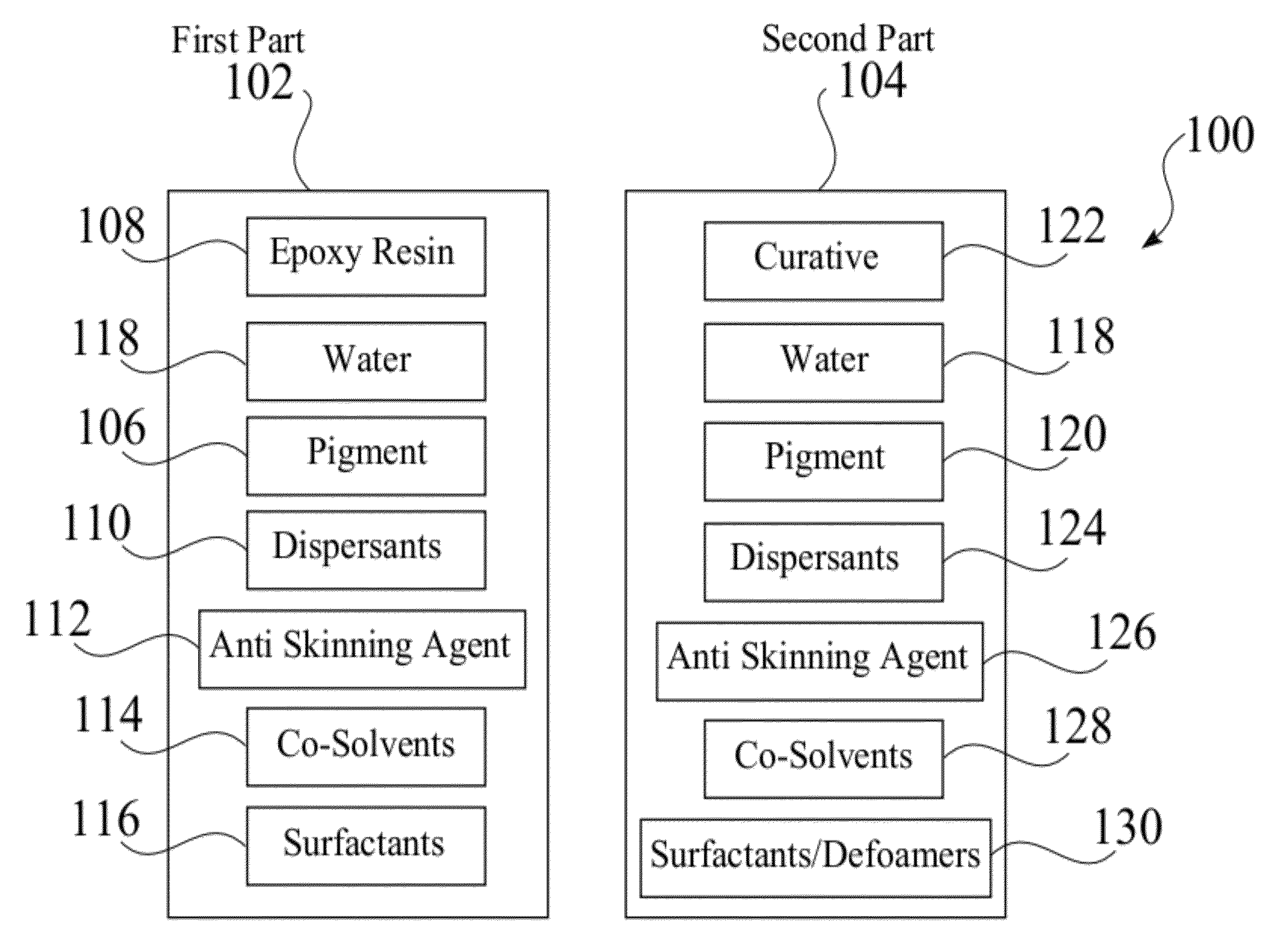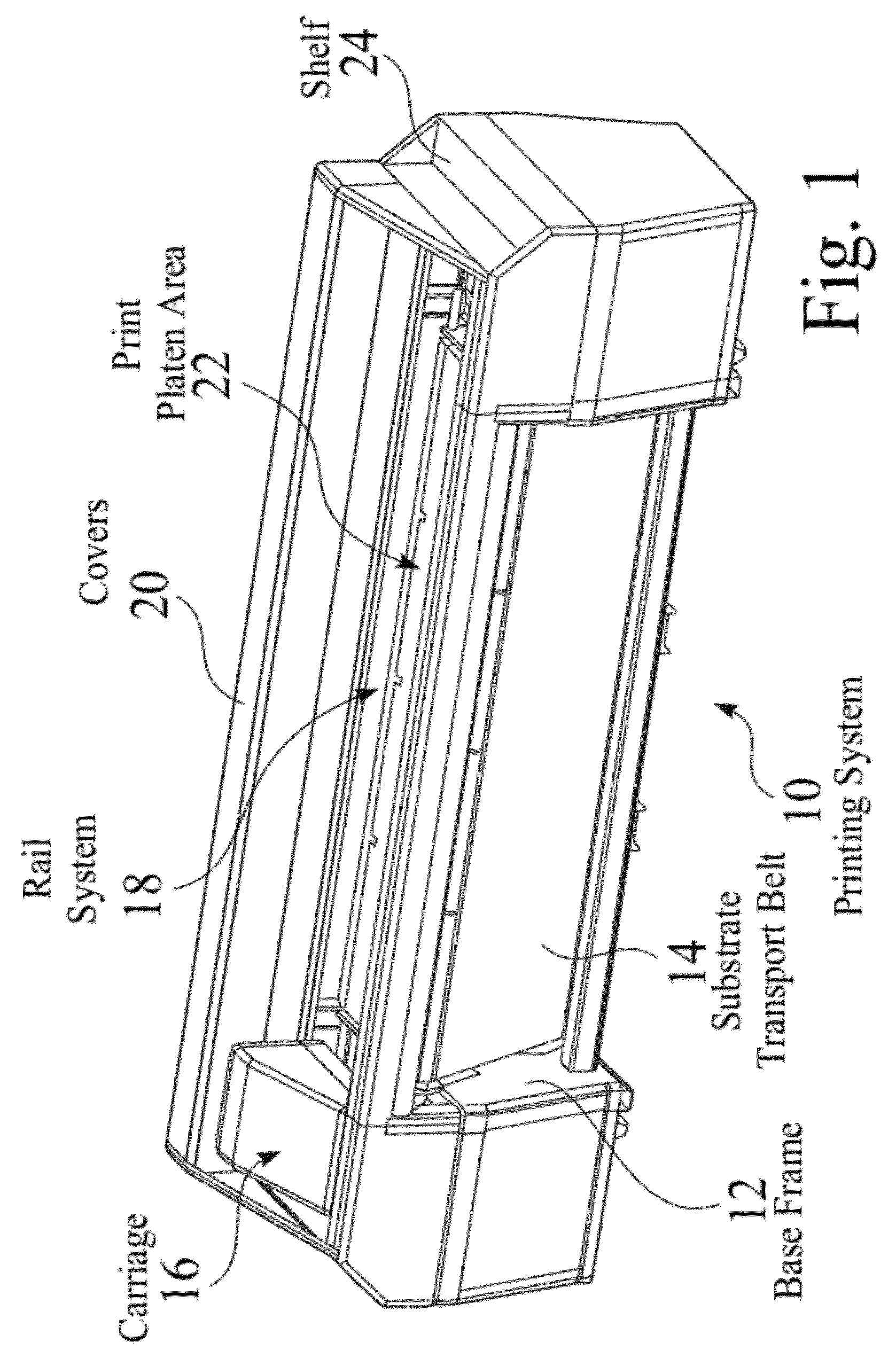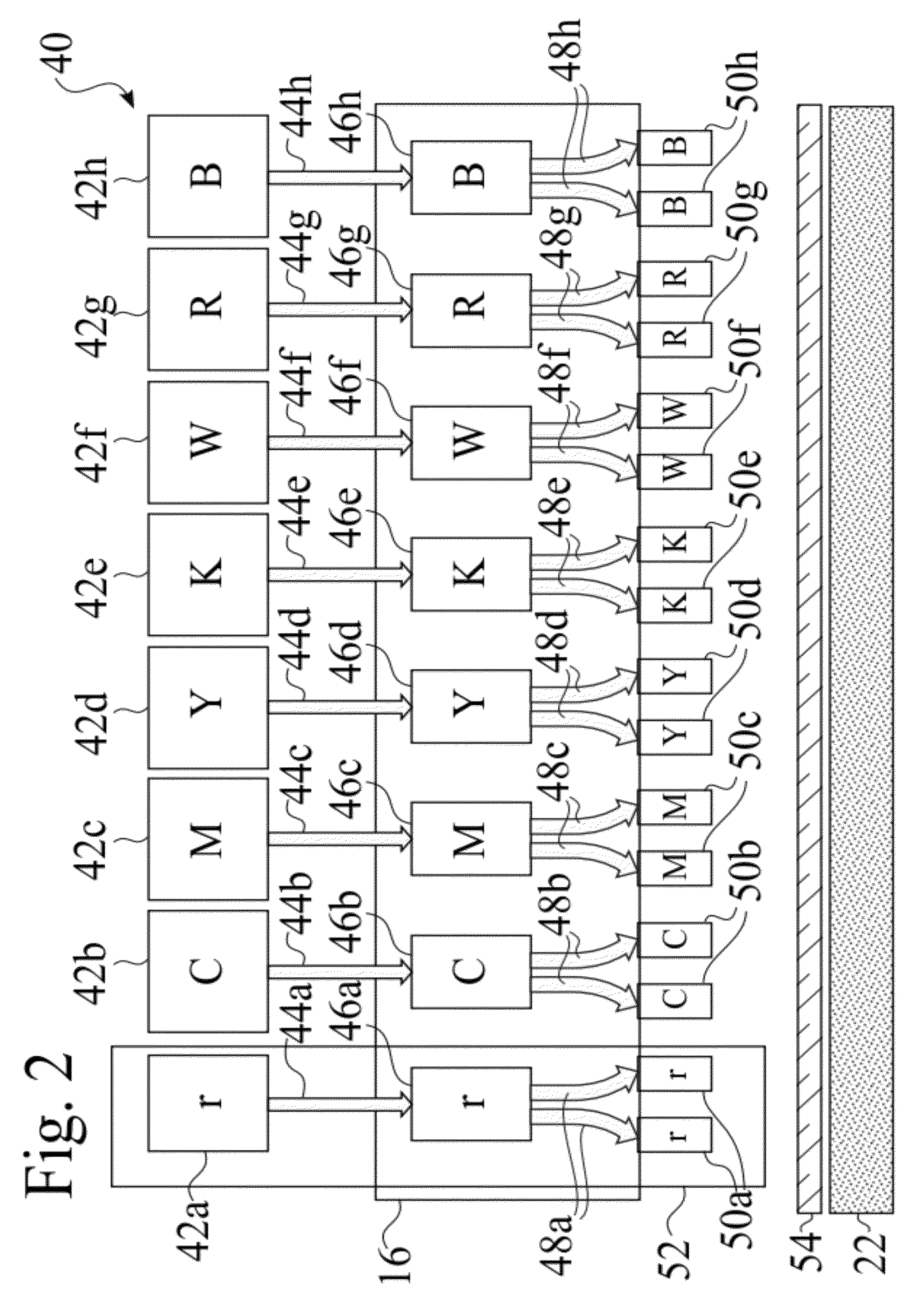Binary epoxy ink and enhanced printer systems, structures, and associated methods
a technology of epoxy ink and printer system, applied in the field of ink jet printers, can solve the problems of reducing productivity and achieving the effects of enhancing vacuum table structures and associated methods, and reducing the use range of inks
- Summary
- Abstract
- Description
- Claims
- Application Information
AI Technical Summary
Benefits of technology
Problems solved by technology
Method used
Image
Examples
Embodiment Construction
[0059]An embodiment of the invention comprises a method and apparatus for the precise metering of a binary imaging solution to each pixel location of an ink jet image on a substrate. The two parts of the binary imaging solution, when combined in the proper ratio, initiate a chemical curing reaction the causes the fluid to transform into a solid or near solid state in a predetermined amount of time. Additionally the chemical reaction of the two fluids causes the material to bond with the substrate and allow for consistent adhesion and imaging characteristics.
[0060]FIG. 1 shows a printing system, generally identified as 10, provided with a carriage 16. The bottom surface of the carriage 16 holds a series of grey scale ink jet print heads configured for printing images on a variety of substrates. Typical substrates include both flexible and non-flexible substrates, such as textiles, polyvinyl chloride (PVC), reinforced vinyl, polystyrene, glass, wood, foam board, and metals.
[0061]In ad...
PUM
| Property | Measurement | Unit |
|---|---|---|
| diameter | aaaaa | aaaaa |
| volume | aaaaa | aaaaa |
| volume | aaaaa | aaaaa |
Abstract
Description
Claims
Application Information
 Login to View More
Login to View More - R&D
- Intellectual Property
- Life Sciences
- Materials
- Tech Scout
- Unparalleled Data Quality
- Higher Quality Content
- 60% Fewer Hallucinations
Browse by: Latest US Patents, China's latest patents, Technical Efficacy Thesaurus, Application Domain, Technology Topic, Popular Technical Reports.
© 2025 PatSnap. All rights reserved.Legal|Privacy policy|Modern Slavery Act Transparency Statement|Sitemap|About US| Contact US: help@patsnap.com



